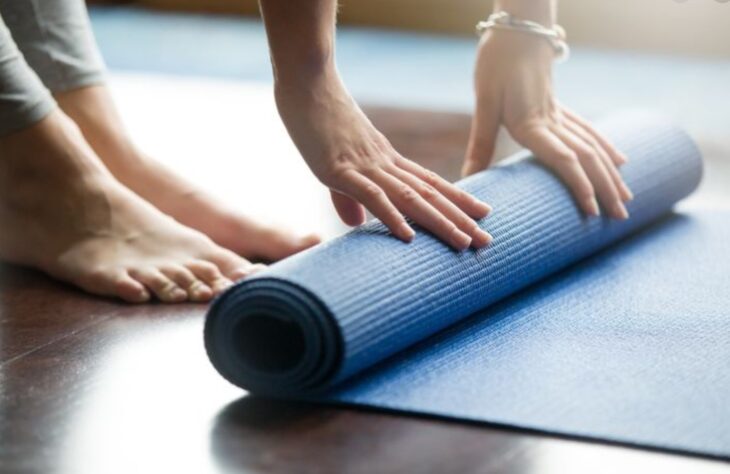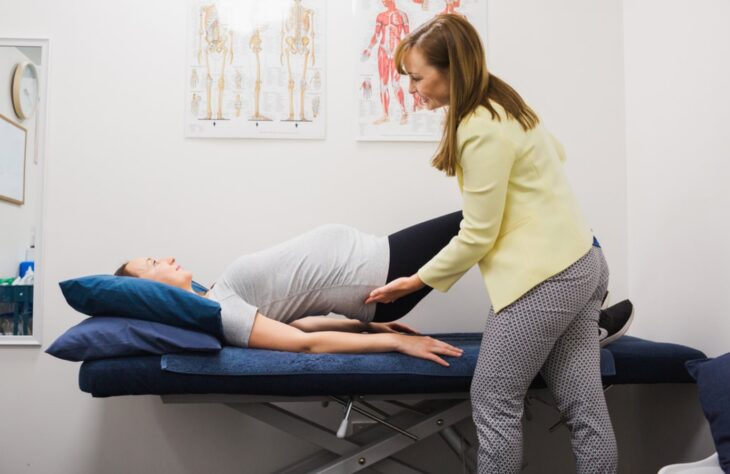Human health is very important. In recent years an abundance of research has been completed that is helping people of all genders to live for longer. But, its also becoming clear that there are significant differences between women’s health needs and men’s.
This has led to the development of separate branches of medicine. Women’s health is a branch that deals with conditions affecting women emotionally and physically.
There are various ways to treat women’s health, depending on the exact problem being faced. Physiotherapy treatments deal with disorders that affect the pelvis and pelvic floor.
Of course, the key when undertaking physiotherapy is to use a reputable expert such as experts in sports Physio at erkophysio.com situated in Alexandria, or near where you live.

Source: The Physio Company
Contents
What Conditions Are Dealt With By Women’s Physiotherapy
The pelvic area of a woman can be a hotspot of issues, especially if the lady has had a baby in the past. This area can be placed under immense pressure, leading to a weakening of the pelvic muscles. This results in incontinence or constipation. Women also suffer from prolapsed and general pelvic pain.
Of course, this is often seen as an embarrassing topic, despite being natural and something that many women suffer from. It’s estimated that one in four women experience pelvic issues.
Dealing with them through physiotherapy doesn’t just give the women an opportunity to alleviate or even cure the symptoms. It also offers a place to talk about problems without stigma. As physiotherapists handle many different issues, people won’t know why a woman is going. That can be enough to get someone to visit a physio and get the help they need.
Of course, in the ideal world, there won’t be a stigma connected to women’s pelvic issues and they’ll feel free to get the help they need and deserve. But, for now, a visit to your physiotherapist is the best idea.

Source: Integral Physical Therapy
Dealing With Pelvic Floor Issues
The human body is surprisingly complex and this is perfectly illustrated by the pelvic floor. It’s a very complex structure that consists of several muscles. These muscles support the pelvic organs. They are also an essential part of the birth canal, urine passages, and stool pathways.
You may hear the pelvic floor described as a hammock. This is because it lifts and supports these muscles, in the same way a hammock would.
These muscles contract and relax at various times, they need to do both to provide you with healthy movements. Contracting prevents constipation from occurring. In contrast relaxing allows stools to pass, urination to occur, babies to be born, and for women to have sex. It’s an important area of the body.
If these muscles become weak or over-tighten then you’re going to experience pelvic issues. What is interesting is that these muscles can over-tighten in one part of your pelvis and relax too much in the other.
Weak pelvic muscles mean the pelvic floor is unable to support the pelvic organs. This results in incontinence. It can mean you leak urine, feces, or both. You may also experience the urgency to use the toilet even if you don’t need to go. In addition, weak muscles increase the risk of prolapse.
It should be noted that weakening muscles are not a sign of aging, there are many reasons why they may become weak but there are also treatment options.
In contrast, pelvic muscles that are too tight can make it difficult to empty your bowels or bladder properly. This can result in pain when urinating, an increased risk of urinary tract infection, and constipation or bowel pain.

Source: HuffPost
The Treatment
Your physio will guide you through the process of treating your pelvic floor and restoring your strength and vigor.
You’ll be instructed regarding the best pelvic floor re-training exercises. In addition, the physiotherapist may provide pelvic floor educators and muscle stimulators, these will improve muscle strength.
Another great treatment that most physios will recommend is the use of Pilates to increase pelvic stability by strengthening the abdominal muscles.
Your physio should also look at your lower back to see if you are experiencing any pain there. Lower back issues can negatively contribute to pelvic floor issues.
It is important to be guided by your physio as there are many different treatment options available. You may find yourself benefitting from the following:
- Neural Mobilisations
- Internal manual therapy techniques
These are designed to relax the pelvic floor muscles and encourage scar tissue to heal while undertaking myofascial stretches.
- Myo-fascial release of connective tissue
One strip of tissue connects the abdomen, hips, and pelvis. Releasing the connective tissue can help it to perform properly.
- Relaxation and Breathing Techniques
- Modifying your toilet positioning to get the best results
- Pelvic floor exercise and even general exercise to make the pelvic floor stronger again
- Vaginal dilators and muscle stimulators that re-train the pelvic muscles
- Guidelines re when you start the exercises, the intensity, and monitoring off results

Source: Czech Universities
When To Seek Help
Women who have given birth are particularly prone to pelvic issues. However, they can affect any woman. That means you should schedule an annual appointment simply to have your pelvis checked.
If you experience any issues or discover you’re pregnant then see your physiotherapist. They can advise you on the best way to exercise and strengthen pelvic muscles, even during pregnancy. This should reduce the likelihood of problems arising after the birth.
Remember, you don’t need to be pregnant to experience pelvic issues. If you have any concerns you should make an appointment with your women’s health physiotherapist today.

Source: Alamy
Final Thoughts To Consider
Despite the fact that women’s health is a taboo subject you need to embrace it and the potential that a women’s health physiotherapist can offer.
There is no reason for you to suffer in silence, make an appointment, and start the journey back to a healthy pelvis, it’s not as difficult as you may think. With the right support, you’ll find out what the issue is and get it resolved, usually without the need for surgery.
